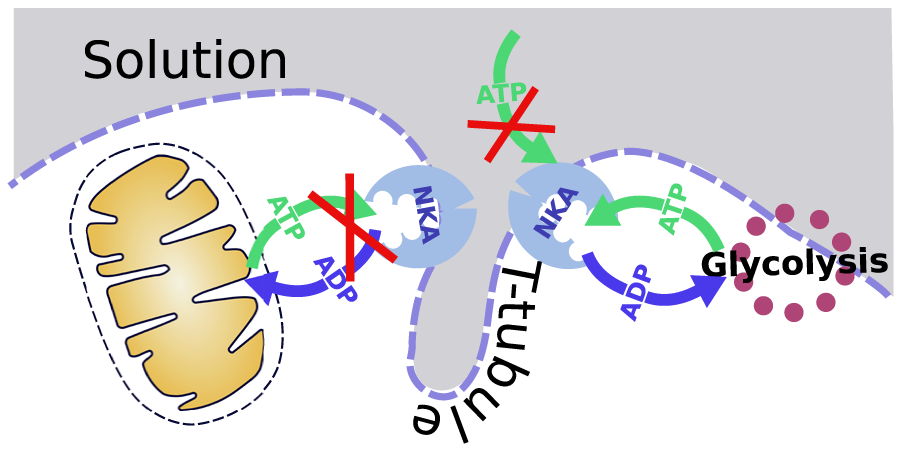Sepp M, Sokolova N, Jugai S, Mandel M, Peterson P, Vendelin M
PLoS ONE 2014;9(6):e99413
PMID: 24932585

Abstract
The effective integrated organization of processes in cardiac cells is achieved, in part, by the functional compartmentation of energy transfer processes. Earlier, using permeabilized cardiomyocytes, we demonstrated the existence of tight coupling between some of cardiomyocyte ATPases and glycolysis in rat. In this work, we studied contribution of two membrane ATPases and whether they are coupled to glycolysis–sarcoplasmic reticulum Ca2+ ATPase (SERCA) and plasmalemma Na+/K+-ATPase (NKA). While SERCA activity was minor in this preparation in the absence of calcium, major role of NKA was revealed accounting to ∼30% of the total ATPase activity which demonstrates that permeabilized cell preparation can be used to study this pump. To elucidate the contribution of NKA in the pool of ATPases, a series of kinetic measurements was performed in cells where NKA had been inhibited by 2 mM ouabain. In these cells, we recorded: ADP- and ATP-kinetics of respiration, competition for ADP between mitochondria and pyruvate kinase (PK), ADP-kinetics of endogenous PK, and ATP-kinetics of total ATPases. The experimental data was analyzed using a series of mathematical models with varying compartmentation levels. The results show that NKA is tightly coupled to glycolysis with undetectable flux of ATP between mitochondria and NKA. Such tight coupling of NKA to PK is in line with its increased importance in the pathological states of the heart when the substrate preference shifts to glucose.